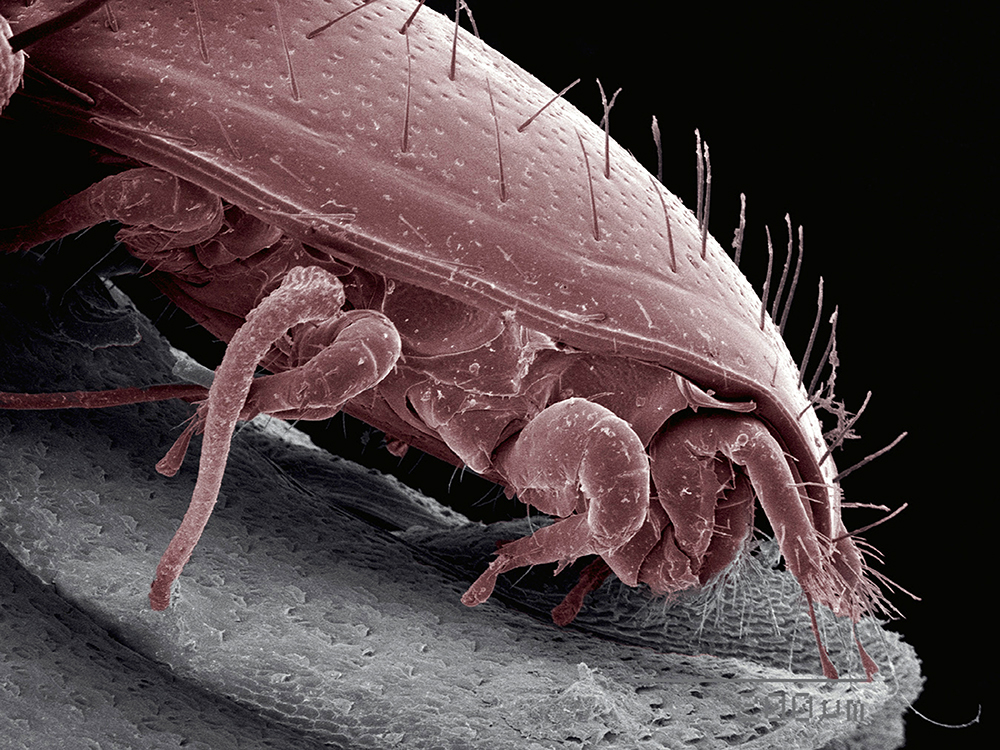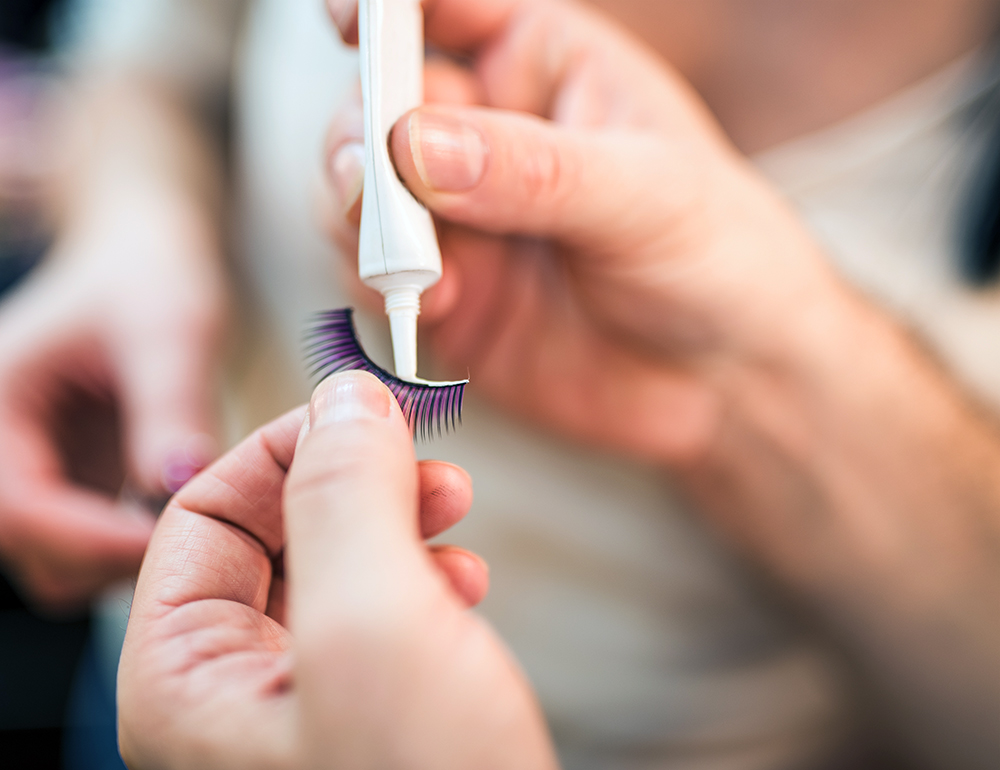Everything You Should Know About Eyelash Mites and Extensions
What are eyelash mites, and how do you get rid of them? Demodex mites cause eyelash mites in two different ways. There are two types of Demodex: Demodex folliculorum and Demodex Brevis. Because both mites are microscopic, they are invisible to the naked eye. They feed on dead skin cells in your hair follicles and are naturally present.
The most common type of Demodex that affects eyelashes is Demodex folliculorum — otherwise known as D. folliculorum. These mites feed on the dead skin cells that accumulate around the lashes and other parts of the eye, such as the lids.
Although everyone has a small amount of these mites, they can still be spread from person to person or animal to animal through close contact. The mites can become a problem in large numbers, resulting in additional skin problems. They can also make pre-existing skin conditions more severe.
You won’t be able to detect the presence of eyelash mites on your own because they aren’t visible. If you notice possible symptoms of a mite outbreak around your eyes, make an appointment with your doctor. Continue reading to find out what this looks and feels like.

Are Lash Mites Linked to Lash Extensions?
Let’s get one thing straight: eyelash extensions don’t cause mites; poor hygiene does. So, how does this relate to lash extensions? The short answer is that it all boils down to eyelash glue. Many lash artists use an adhesive that prevents you from washing, cleaning, or even touching your extensions or natural lashes. This results in a sloppy hygiene routine and an overabundance of mites.
Poor hygiene, not lash extensions, is the leading cause of an unnatural increase in the number of lash mites. Excessive oil and bacteria buildup can be avoided by properly caring for your eyelash extensions. A lash mite infestation would thrive in that environment.
Health officials warn that eyelash extensions can spread mites.
While we all have mites on our bodies, they prefer to congregate around filthy eyelashes. They can cause a serious infection if they overpopulate. If you use eyelash extensions, you should think about how clean they were the last time you cleaned them.
While you may not want to risk ruining your new lashes by cleaning them, one nurse advises that you should because it can get pretty gross if you don’t.
Optometrists are seeing more “Demodex” infestations. This is due to the lash-by-lash application of eyelash extensions.
People are getting these instructions, don’t rub on them, don’t clean them with harsh remover, Piedmont Medical Center Registered Nurse Lindsey Neal explained.
According to Neal, a lack of cleaning can lead to bacterial growth. “You can get an infestation of eyelash mites if you don’t take care of them,” Neal said.
While we all have mites on our bodies, they prefer to congregate around filthy eyelashes. They can cause a major infection if they overpopulate. Itching, redness, and swelling are some of the symptoms.
What’s even scarier? They are contagious, according to Neal. It’s crucial, she says, not to share eye makeup. She also recommends that people clean their eyelids regularly and keep the tools they use to apply extensions clean.
Five Clear Signs You’ve Got Lash Mites:
- Cylindrical crust/dandruff, resembling a clear tubular cuff that encircles the base of your eyelashes and is attached to the eyelid.
- Redness in the lash area that persists
- Itching at the base of the lashes, particularly in the morning
- Eyelash loss that isn’t explained
- A sensation of a foreign body (Feeling like you have something in your eye)
Risk Factors and Causes of Eyelash Mites
Eyelash mites usually don’t cause any problems and are unnoticed. However, if there are too many around your eyelashes, it can cause problems.
Your eyes are surrounded by your nose, eyebrows, and cheeks. As your eyelids protrude more than the rest of your face, it may be more difficult to keep your eyelid area as clean. More mites may be able to live there as a result of this.
If you’re an older adult or a caregiver for one, or your immune system isn’t working well due to a health problem or medication, you’re more likely to have too many eyelash mites. Too many eyelash mites can:
- Irritate the area around the eyelid
- Creates bacteria.
- Make your lashes grow in the wrong direction or loosen up.
- Block oil passages around the edges of your eyelids.
- The growth of tube-shaped dandruff around the lash base is triggered.
What Are the Symptoms of Lash Mites?
- When there are too many lash mites on the lash line, the lash line becomes overcrowded, resulting in multiple mites facing down in each hair follicle.
- When there are too many lash mites in one hair follicle, the natural lash will fall out, resulting in lash-loss.

Lash Mite Diagnosis and Symptoms
Eye problems can be caused by various factors, including having too many eyelash mites. Symptoms, on the other hand, include:
- Itching
- Burning
- Your eyelids have crusty red edges.
- Having the sensation that something “foreign” is in your eye
- Irritation of the eyelids
- Vision is blurry.
- Pain in the eyes
- Tearing in your eyes for no apparent reason
If your doctor suspects eyelash mites are to blame, they will inquire about your symptoms and examine your eyelids for redness or swelling around the edges. They’ll also want to rule out any other conditions that could cause your eyes to irritate.
One thing is certain – if these creeps become overabundant in your lash line, they can cause serious issues such as redness, itching, swelling of the eyelids, infections, and permanent lash loss! If mites die within the lash follicle, their eggs, clawed legs, spiny mouthparts, salivary enzymes, and especially their decaying bodies may cause these unpleasant symptoms.
There are several ways for your doctor to determine if eyelash mites are the source of your symptoms. A slit lamp, a special microscope with a bright light, can show if:
- Your eyelashes are covered in tube-like dandruff.
- A few of your eyelashes, or their eggs or babies, are on your eyelid.
Are Eyelash Mites contagious?
These mites can spread from person to person. Contact with others who have eyelash mites can spread them. This can happen due to being near someone with a mite infestation in their eyelashes or skin.
You’ve probably also been told not to share your eye makeup. Eyelash mites can be spread through mascara, eyelash brushes, and other cosmetics used around the eyelash area, so this advice is especially critical.
Treatment for Eyelash mites
While treatments are available, getting rid of the mites can take three months. Doctors recommend tea tree oil for cleaning lashes. Anti-parasitic drugs may be recommended. If eyelash mites aren’t causing problems, they don’t need to be treated. And getting rid of eyelash mites can be difficult at times. Over-the-counter eyelid scrubs may or may not be effective.
What treatments are most effective? Your doctor may advise you to use Tea Tree Oil.
Tea tree oil. Apply this to your closed eyelids and face after soaking it in wipes or cleansers. If you open your eyes too soon after wiping, they will sting. If the oil is full strength, make sure you dilute it because it will be too strong for your thin eyelid skin.
Sulfur, permethrin, ivermectin, and mercury oxide are common ingredients in creams and ointments. These medications are applied to the base of your lashes.
Bonus tip: Leave waste products that you’re allergic to in the trash.

What Can You Do to Avoid Eyelash Mites?
If an infestation of eyelash mites becomes out of hand, it can lead to other eye problems. Good hygiene and eye care can go a long way toward preventing mite infestations in the first place. The following methods can aid in the prevention of eyelash mites:
- Never share mascara or any other cosmetics or makeup tools.
- Make sure to use non-oily cosmetics and makeup.
- Wash your face twice a day, focusing on the eye area with only water.
- Use eyelash wipes daily, especially if you wear makeup or have a lot of debris or oil on your lashes.
- As needed, scrub gently with baby shampoo and an eyelash brush.
Bonus tip: Sheets, towels, and especially pillowcases should be washed in hot water regularly and dried thoroughly on a high heat setting. Avoid close facial contact and do not share pillows, towels, or bedding if a friend or loved one becomes infected. So, in a nutshell, your romantic life is on hold.
FYI: Eyelash wipes, baby shampoo, and an eyelash brush are all available online.
Why are some people able to clean their lash extensions while others are unable?
The glue used by your lash professional is the main reason why some people can clean their lash extensions while others can’t. Some glues are rubber-toughened, giving them a tough but pliable texture. Consider bending a piece of licorice as an example. It will not break or crack no matter how much you bend or twist it.
When your natural lashes or extensions are stressed, they will not crumble or come loose from the natural lash. Instead of falling out, the adhesive and your extensions will bend and flex with your lashes as you clean them.
Many lash glues on the market aren’t rubber-toughened, resulting in a brittle but strong texture. Imagine bending and twisting a Butterfinger, which, unlike licorice, will crumble, crack, and break. Non-rubberized adhesives, like the Butterfinger, break down when you clean or wet your eyelash extensions.
What’s the Proper Way to Clean My Lash Extensions?
The best way to avoid this is to keep your lashes clean and free of dirt daily, especially for those who use eyelash extensions.
Without losing your lash extensions, you should be able to clean them once or twice a day. Brands have created an aftercare kit with 100 percent cotton flannel wipes to cleanse and condition your natural lashes and extensions to make lash hygiene easier. Gently rub the wipe across your lash line and eye area to clean your lashes.
You can use an eyelash shampoo in addition to a cleansing conditioning wipe. Brush the eyelash cleanser through your lashes with the back of a disposable wand as if you were applying mascara. If you haven’t been cleaning your lashes and are worried about eyelash mites, look for a product containing tea tree oil, which can help keep mites at bay.
What Should I Do If My Eyelash Extensions Don’t Like Being Cleaned?
Ask your salon or lash professional what brand of adhesive they use if your lash extensions have fallen out when you clean them. Consider switching stylists if they don’t offer rubber-toughened glues.
Maintaining lash extensions while promoting the health of your natural lashes necessitates proper hygiene. The good news is that you don’t have to choose between eyelash extensions and lash health!

How To Get Rid of Eyelash Mites
Demodex mites are impossible to diagnose on your own due to their small size. Only a thorough eye exam will reveal the source of your symptoms.
A medicated ointment is usually used to treat a Demodex mite infestation and prevent the mites from reproducing. Oral medication may be prescribed in severe cases. Your eye doctor may also clean the margins of your eyelids manually or prescribe over-the-counter products to relieve irritation and promote healing.
When should you see a doctor? If you do not see any results from medical treatments or home remedies, it’s time to see your doctor for a second opinion.
If your rosacea or eczema worsens, you should schedule an appointment. If your symptoms affect your overall quality of life, contact your doctor.
Eyelash mites can cause vision problems if left untreated. They may also cause dry eyes. If you notice any changes in your vision or eyes, you should see your doctor. Eyelash mites are one of the possibilities to rule out.
Last but not least
Demodex mites are widespread, with D. folliculorum causing the most damage to the eyelashes and surrounding area. While having these mites on your skin in moderate amounts is completely natural, infestations can cause the mites to become out of control. Eyelash-mite outbreaks can result in unpleasant symptoms around your eyes.
Underlying skin diseases, such as rosacea, can sometimes exacerbate the problem of eyelash mites. Skin infections and uncontrolled eczema can exacerbate your symptoms and make future infestations more likely.
Demodex mites are easy to treat if caught early. If you have rosacea, you should have your skin tested for mites regularly. As a general rule, if you have any new or worsening symptoms, you should see your doctor.
